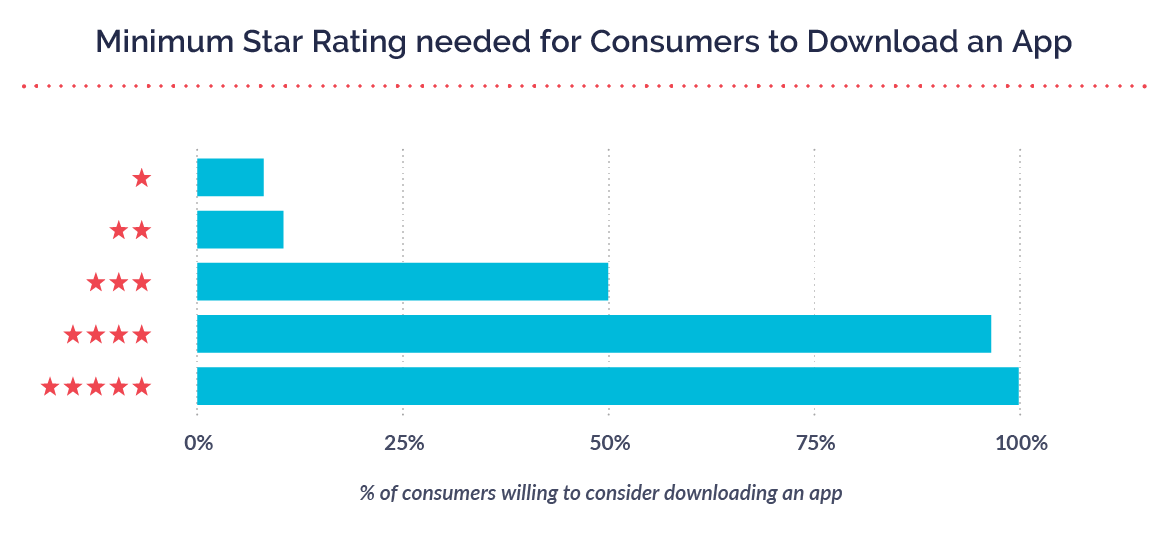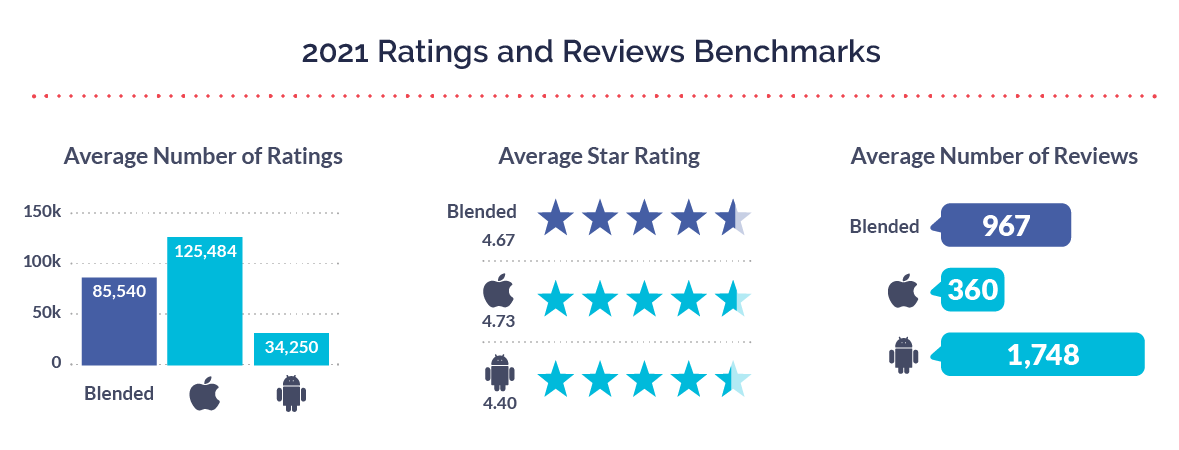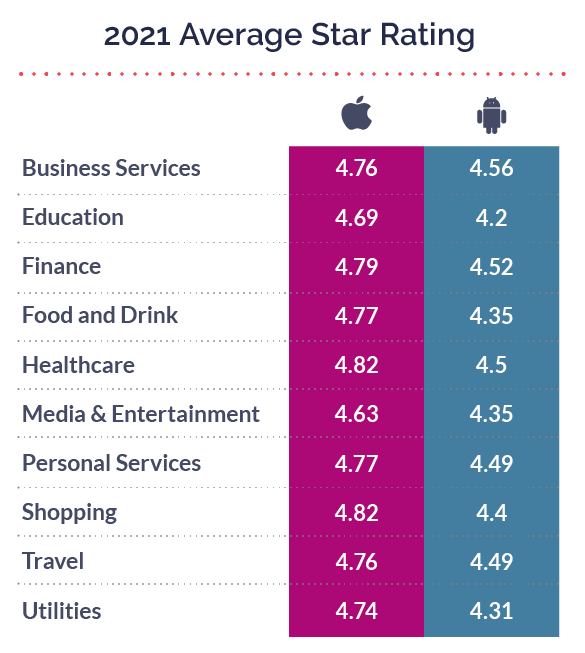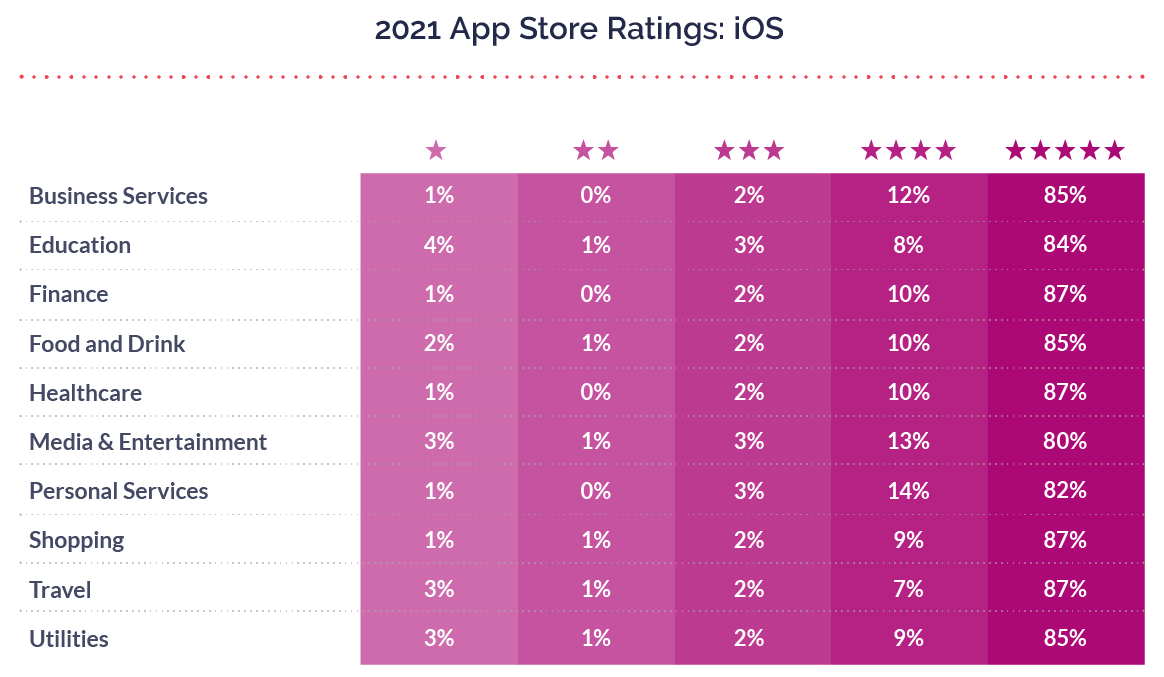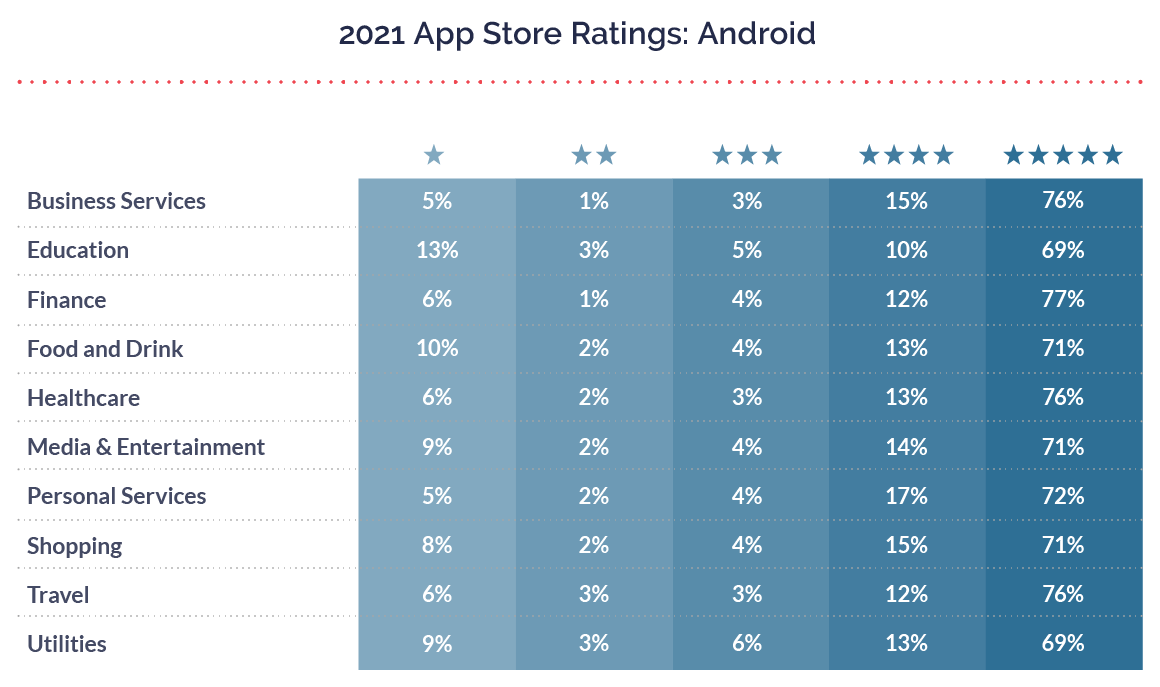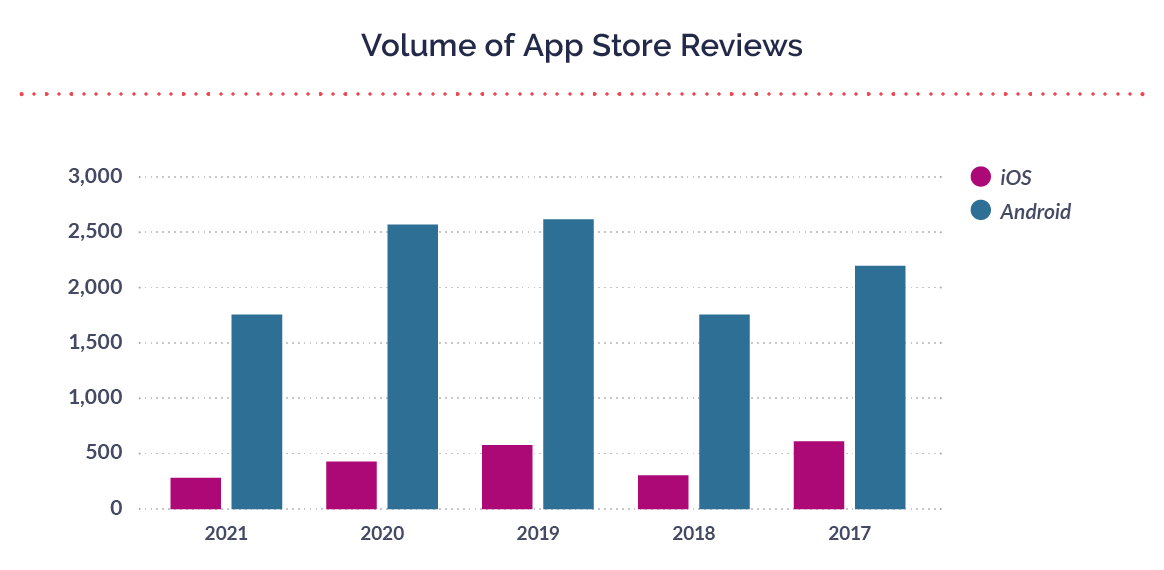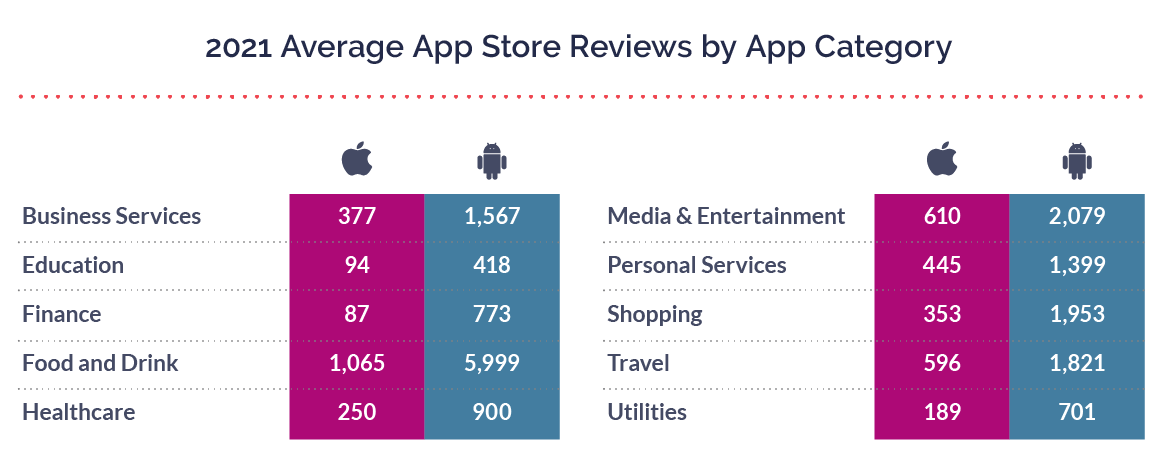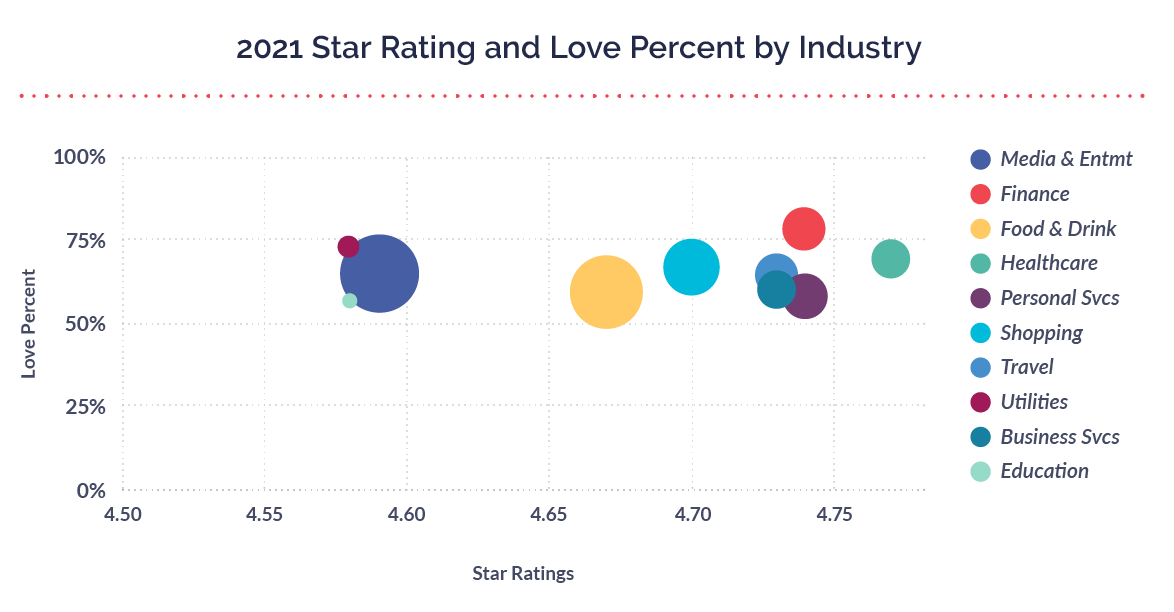Consumers are more skeptical of digital marketing than ever before, and peer recommendations in the form of app store ratings and reviews stand alone as the single greatest driver of discovery and conversion. Thanks to regulations like GDPR and CCPA, consumer privacy has moved to the forefront of marketing and product development, and a trusted recommendation in the form of a rating or review carries more weight than ever.
Given all of this, app store ratings and reviews are an important piece of the puzzle in understanding holistic customer experience and driving long-term customer lifetime value. The following data comes from our seventh-annual Mobile Customer Engagement Report and provides a holistic view of where most apps stack up when it comes to ratings and reviews. Download the full report for yourself to see industry-specific data along with more macro trends around loyalty, retention, surveys, response rates, and more.
Ratings and reviews benchmarks for 2022
When we asked, consumers were clear that the lower the star rating, the less likely they’d be to download the app. The opportunity cost of a star is huge. Moving a three-star app to four stars, for example, can lead to an 89% increase in conversion.
Across the apps included in our study, the average star rating was 4.67. Apps had an average of 85,540 star ratings and an average of 967 app store reviews.
It’s challenging to compare apps across categories due to differences in consumer behavior, particularly when it comes to ratings and reviews. Comparing apps to others in their industry yields a more accurate picture of performance.
Apps across industries saw differences across their average star ratings, on both iOS and Android.
There was also disparity across the total distribution of star ratings in both app stores. Below is the 2021 distribution across both iOS and Android, by app category.
Since the release of iOS 11, we’ve seen a downturn in the number of iOS reviews as the rating process was simplified. Google also released big changes to its Play Store in-app review API in October 2020, which had a sweeping impact on how app publishers prompt for ratings and feedback. Ultimately, the changes to both app stores made the process of rating an app easier, less disruptive, and more in-line with the goal of optimizing for consumer feedback rather than gamifying high ratings.
However, the number of app store reviews have steadily decreased as it’s harder for consumers to leave a review now that ratings prompts are decoupled. Decoupling refers to targeting customers for ratings separate from an audience that sees the Alchemer Mobile (formerly Apptentive) Love Dialog, or showing the Rating Dialog at another point in your customers app journey that is not immediately after the Love Dialog. Adding a step in the consumer feedback journey means that, by default, it will be harder and less likely that people complete the path.
Below are the average number of ratings both iOS and Android apps saw across the last five years.
Below is the distribution of the average number of app store reviews, by app category, in 2021.
We also saw an interesting correlation between star ratings and Love Percent. Industries like Finance and Healthcare have a high Love Percent and average start rating; industries like Education and Media and Entertainment have a low Love Percent and average star rating. This drives home the point that while high app store ratings aren’t the most important piece of the consumer feedback puzzle, they are a critical part to get right.
2022 app ratings and reviews—are you set up for success?
The data tells us ratings and reviews continue to play a major role in your app’s growth long after consumers have found their way to your app store product page. They serve as social proof to indicate your app’s quality in an otherwise blind evaluation process. And in both app stores, review recency matters more than ever before, which means being able to identify and activate your fans is critical.
For more on improving your app’s ratings and reviews, check out our guide, Mobile App Ratings and Reviews Aren’t Enough.
If you want industry-specific data for 2022, download the full 2022 Mobile Customer Engagement Benchmark Report here.

